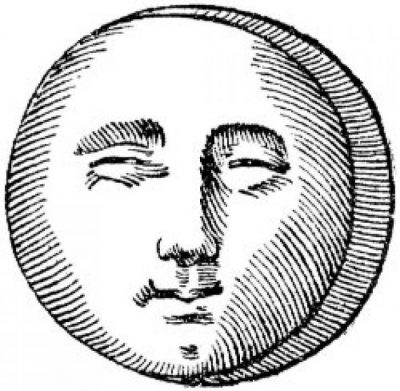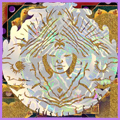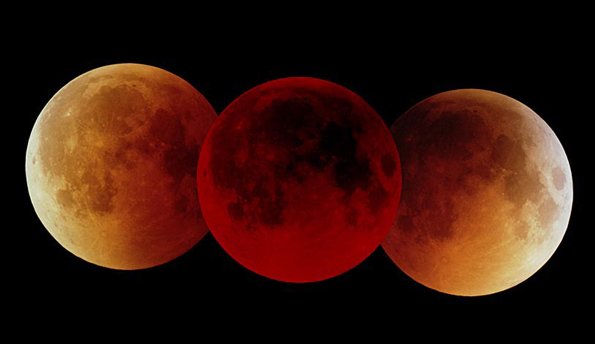 The astrological technique known as Secondary Progressions (the most widely used type) is often perceived as a taboo subject by many astrological apprentices. Beginners have been made to believe that Secondary Progressions are very difficult and that their study should be left to more advanced students or adepts of the Art.
The astrological technique known as Secondary Progressions (the most widely used type) is often perceived as a taboo subject by many astrological apprentices. Beginners have been made to believe that Secondary Progressions are very difficult and that their study should be left to more advanced students or adepts of the Art.
My opinion is that, if you have mastered the basic mechanics and general meaning of Natal and Transits Astrology, you should also be ready to tackle Progressions; and that the sooner you do that the better.
Are Progressions very difficult?
Once upon a time, in the not so far off era, when personal computers were not around, one obstacle to learning Progressions was the cumbersome calculations needed to cast a Progressed Chart. Adding to this the fact that a fairly accurate birth time is required when progressing the Houses and Angles, it is easy to understand why many students gave up on Progressions.
Nowadays though astrological computer software (like Solar Fire and others) make the job of calculating Progressions a real breeze. With those difficulties gone, the reading of Progressions is not any more difficult than the reading of Natal Charts and Transits.
The basic difference between Natal Progressed and Transiting Planets
The Natal Chart
In a Natal or Birth Chart the positions of the Sun, Moon and Planets in the Zodiacal Signs and their relative orientation to the local horizon (House placements) remain fixed for life. These are the starting points to any future development, because the degrees and areas they occupy become sensitized with the energy of a particular celestial body for the rest of the person’s life.
The Natal Chart is then the image of a cosmic moment frozen in time. Astrologers keep referring to that moment and its planetary positions as to a given, unchanging fact. It is like if the Sun, Moon, Planets and Angles of the Birth Chart had left an indelible mark on those specific degrees, creating a sort of DNA of your psyche that will continue to have a bearing on your character and destiny throughout life.
Transiting Planets
It is usually easy for beginner students to grasp the mechanics and meaning of Transits. Having frozen the moment of birth in the Natal Chart, we are well aware of the fact that the Earth, Moon and Planets do not stop moving in their orbit. They all move at their appointed speed in endless cycles. Thus moving they will eventually come in contact with the sensitive degrees of the Natal Chart, those occupied by the Sun, Moon, Planets or Angles at the time of birth.
For instance, the Transiting Moon completes a whole orbit around the Earth in about a month. During this time she will in turn pass over (conjunction) all of the sensitive degrees in your Birth Chart and also form meaningful geometrical angles with the same (30, 45, 60, 90, 120, 135, 150, 180 degrees).
The Transiting Sun will do the same thing during one year (the time the Earth needs to complete one orbit around the Sun); while giant Jupiter will take 12 years to cover the whole Zodiac and Saturn nearly 30 years. A slow moving planet like Uranus will need a life time to accomplish the same feat (84 years); while Neptune and Pluto are so slow that they cannot complete their orbits around the Sun in a lifetime, taking respectively 148 to 245 years to complete their zodiacal journey.
Progressed Planets
Important note: the following note is a bit technical. Please read it only if interested in this sort of topics.
All the Progressions I am discussing here are known as Secondary Progressions. Even the Angles’ motion usually considered as belonging to the Primary technique, is actually ‘Secondary’ when it is calculated in degrees of longitude along the Ecliptic rather than degrees of Right Ascension along the Equator, as in Primary Directions. The name of these Progressions doesn’t mean however that they are secondary or less important than Primary Directions, for instance, or more important than the so called Tertiary Progressions.
It would take too long to explain the origin of these definitions here (if interested in the difference between various progressed techniques pleas visit Bruce Scophield of Astrolabe).
For now it is sufficient for you to remember that Secondary Progressions are not in any way less important than any other progressive techniques. Secondary Progressions and, occasionally, Primary Directions are the techniques I use in my work and consultations, together, of course, with the all important Transits.
What are Progressions and how we calculate them? We have seen why the celestial bodies’ positions are considered fixed and unchanging in Natal Astrology. We have also seen that the Transits represent the movements of the real time celestial bodies in the solar system, and the way these movements interact with our fixed Natal positions. Progressions on the other hand do not reflect the motions of the celestial bodies in real time, but describe instead the motions of these same celestial bodies according to our own very individual inner clock. To me Progressions are the best way to understand that, despite the fact that, casting a Birth Chart, we seem to consider our Natal positions fixed and unchangeable, these also change, with time. This makes a lot of sense, because, even if your basic character traits do not change from childhood to old age, you still change and grow constantly, in your body that grows and ages, as well as in your psyche that also matures and slowly evolves.
One way of describing the two techniques could be something like this: while the Transiting Planets describe external forces that contain the potential for becoming internalized, the Progressed Planets describe internal forces that contain the potential for becoming externalized. Putting the two techniques together can help the astrologer realize better the dual nature of all astrological factors, the inner life for ever reflected in the outer life, and vice-versa.
The peculiarity of the Progressed Planets is that they move much slower than their Transiting counterparts. So, for instance, while the Transiting Sun takes one year to move through all the Zodiacal Signs, the progressed Sun would take 360 years to do the same! In fact, while the Transiting Sun moves an average of one degree per day, the Progressed Sun moves an average on one degree per year! Same with the Moon, whose average motion in transit is 13 degrees per day, moving in Progression instead an average of 13 degrees per year. It is the same for all the Progressed celestial bodies: the amount they move in one day in real time corresponds to the amount they move in one year in Progression. That’s it; this is the main difference between Progressions and Transits.
While the most important Transits are the ones formed by the slow moving bodies, because the others do not last long enough to have a lasting effect, in the Progressed Horoscope the slow bodies move hardly at all in a whole lifetime, so the positions they had and the aspects they formed at birth remain the same throughout life (karmic stuff), while the Progressions of the faster moving celestial bodies and the Chart’s Angles (Sun, Moon, Mercury, Venus, Mars, Jupiter, Ascendant and Mid-Heaven axis) are the most significant, lasting long enough to make quite an impact on the life of the individual. So, for instance, the effect of Mars progressing over your Natal Saturn could last for four years or much longer if the Progressed Mars happens to be Retrograde. You would interpret this Progression in a similar way as an aspect between Transiting Mars and Natal Saturn, with the difference that the transit will last only a few days while the progression will last for years and obviously have a much greater, often life changing effect on your life.
An important note on the slow moving Progressed Planets
So we have established that usually the most important Progressions are those involving the fast moving Planets and Angles. While this it’s true, during a lifetime, especially a long one, sometimes slow moving Planets such as Jupiter and Saturn progress enough to bring to exactness a natal aspect or to separate from a natal aspect, thus diminishing its influence.
Another very important consideration is that all slow moving Planets (from Jupiter to Pluto) can be carried by the movement of the Progressed Houses onto new Houses (in an contrary direction than the Zodiac) and, particularly significant, they may in time become conjunct one of the four Angles. These types of Directions are indeed extremely influential and should be carefully noted when reading a Progressed Horoscope, either by itself or when comparing it to the Natal Chart.
The Houses from a Progressed viewpoint
As i said earlier, if you have studied and understood the areas of experience contained in each Natal House you are ready to study Progressed Houses also, because the areas indicated by those are the same as the Natal ones. On the other hand it is important to remember that, when using Progressions, we are always looking at a double image.
To make an example, the Moon may be progressing at the same time through a Natal House and a different Progressed House. This is because not only the Sun, Moon, Planets advance in their progressed motion but the four Angles and all the Intermediate cusps also advance. In fact the Mid-Heaven/Lower-Heaven axis moves in progression at an average of one degree per year and the Progressed Ascendant/Descendant axis moves one or more degrees, depending on the Sign rising at birth and the hemisphere where the birth took place, some Signs being of Long Ascension (slow moving) and others of Short Ascension (moving rapidly through a Sign).
Due to the above reasons a Progressed Chart has to be studied by itself as if you were looking at a brand new Birth Chart, including the House positions of all celestial bodies in it. A great practice is to cast a new Progressed Horoscope every year or so to more easily observe the evolution and changes taking place as life advances.
It is necessary however also to compare the Progressed Horoscope to the Natal one, so that we can observe the ever changing relationships between the basic tendencies of the individual and the psychological evolution taking place during a lifetime.
One very important aspect that will slowly but surely change is the relative position of Sun, Moon and Planets within the Natal Houses framework. Most astrologers who use Secondary Progressions generally consider the passage of the Progressed celestial bodies through the Natal Houses more important than the their positions in the Progressed Houses. I believe that this is not necessarily true all the time. Some people may be more attuned to their Progressed Houses placements, others to their Natal. Most of us will be somehow responding to the passage through both Natal and Progressed House. This duality can indeed make the reading of the Progressed Horoscope more complicated nut also richer and deeper.
The Progressed Moon/Sun Phases
One of the most significant aspects of the Progressed Horoscope is the slowly changing relationship between the Progressed Moon and Sun. An example should make this clear. Everyone is born during a certain phase of the Sun-Moon cycle, from New Moon to Full Moon (waxing), or from Full Moon to New Moon (waning). The phase we are born under is a very important factor in the overall reading of the Birth Chart. By Progression the Moon’s phase slowly changes, creating periods of waxing and periods of waning lunar energy. Using the most simple example of someone born right on the day of an Aries New Moon day on the zero degree of this Sign, it will take the Progressed Moon an average of seven years to enter the Progressed First Quarter phase in the Sign of Cancer (90 degrees angle ahead of the Sun) and another seven years to become Full in the Sign of Libra(180 degrees distance from the Progressed Sun), after which the Progressed Moon will begin waning. Seven years after that the Progressed Moon will reach the Last Quarter phase in Capricorn, and after another seven years (around the age of thirty) there will be a New Moon again, but this time it will fall in the Sign of Taurus, because the Progressed Sun has slowly advanced into Aries (at the rate of one degree per year) and after 30 years has left Aries and has entered Taurus. Apart from this simple example, depending in which phase of the Moon you were born, those Progressed phases will occur at different times in your life.
Progressed New Moons, no matter at which age they occur, are always harbingers of major changes in the person’s life, the beginning of a complete new cycle of experience. The Progressed First Quarter is considered a difficult but dynamic period, the Progressed Full Moon a time for significant realizations and life climaxes; while the Progressed Last Quarter is a time for self-reflection and soul searching in order to end the old cycle and, in seven years time, begin a new cycle having dealt with the unfinished business of the past.
Progressed Lunar Returns
Very important in the study of Progressions are the Progressed Moon’s Returns that occur at intervals of 27/28 years (depending on the variable speed of the Natal Moon). This timing is due, of course, to the fact that the Progressed Moon moves an average of only 13 degrees per year, because what happen in a day in ‘real’ life corresponds to what happens in a year in progressed life.
In real time the Transiting Moon moves an average of 13 degrees per day, returning to its starting position every 27/28 days (Transiting Moon Return, marking a new lunar cycle every month).
During the 27/28 years of the Progressed Moon’s motion she will cover all the twelve Signs’ gamut of emotional responses and expressions. During this 27/28 years the Pr Moon will also form all possibilities of aspects (known as Directions in the Progressed Horoscope) with all the other celestial bodies, both in the Natal Chart and the Pr. Chart.
When she finally returns to the Sign and House she has started her journey from (Natal positions) she will have experienced the whole range of emotional dispositions in the Zodiac. For example: from a Natal light and friendly Gemini Moon to, 25/26 years later, to a deeper and more emotional and affectionate Pr Moon in Taurus, with all the variations in between), The Pr. Moon she will have also triggered all manners of planetary effects, from the romanticism and idealism of Neptune, to the emotional entanglements and intensity of Pluto, for example, etc. These experiences will hopefully help the individual to develop a keener emotional intelligence as life advances. Of course this evolution is not a guarantee as we need to become conscious of our own emotional bias and projections before we can say to have evolved emotionally.
Astrology can be of great help to unravel the mysteries of this Moon’s journey, and to make sense of the emotional characteristic of any given Sign period, validating what the person is feeling even when very much at odds with his/her natal emotional disposition.
So, for instance, a person born with a Cancer Moon will feel reasonably comfortable during the Progressed periods the Moon is moving through the other Water Signs, Scorpio and Pisces; but the same individual may feel at odds with the way he/she is feeling when the Moon progresses through the Air Signs Libra, Aquarius and Gemini. Or an individual with Natal Moon in a Mutable Sign may feel at odds with the Moon progressing through the Fixed or Cardinal Signs. All these experiences will be however invaluable to help our slow but sure emotional evolution.
The passage of the Progressed Moon through each Sign, on an average happening every 2.2 years (two years + two months) is, in my experience, very noticeable, affecting clearly different modes of emotional responses and expressions but also the family and home life of the individual and, of course, the area of experience indicated by the Natal and Progressed Houses she is is progressing through.
The Progressed Sun
The Progressed Sun, advancing on average one degree per year, will complete a whole Sign progression in about 30 years. Of course, depending on the degree occupied by the Natal Sun in a given Sign, it would take the Sun a shorter or longer time to enter a new Sign. People with the Natal Sun in the last portion of a Sign will get to the next Sign in a matter of few years or even few months, while those born with the Sun at the start of a Sign will need years of progressed motion before reaching the next Sign.
The shift of the Progressed Sun trough the Sign, only three of four Signs’ shifts possible in a lifetime, is extremely significant, showing an evolution in character and consciousness. These changes do become more obvious however when the Progressed Moon or other Progressed Planets act as triggers, by forming special Direction to the Sun. A very good example is a Progressed New Moon having a definite impact on the evolving consciousness into a Progressed Sun Sign, even if happening years after the Progressed Sun has entered the Sign.
The Progressed Sun’s journey is truly the hero’s journey, every year ( = one degree in the 360 degrees zodiacal wheel) another brick on the yellow brisk road toward the Emerald City of a fully conscious life.
Happy study of Progressions!
***










































Recent Comments